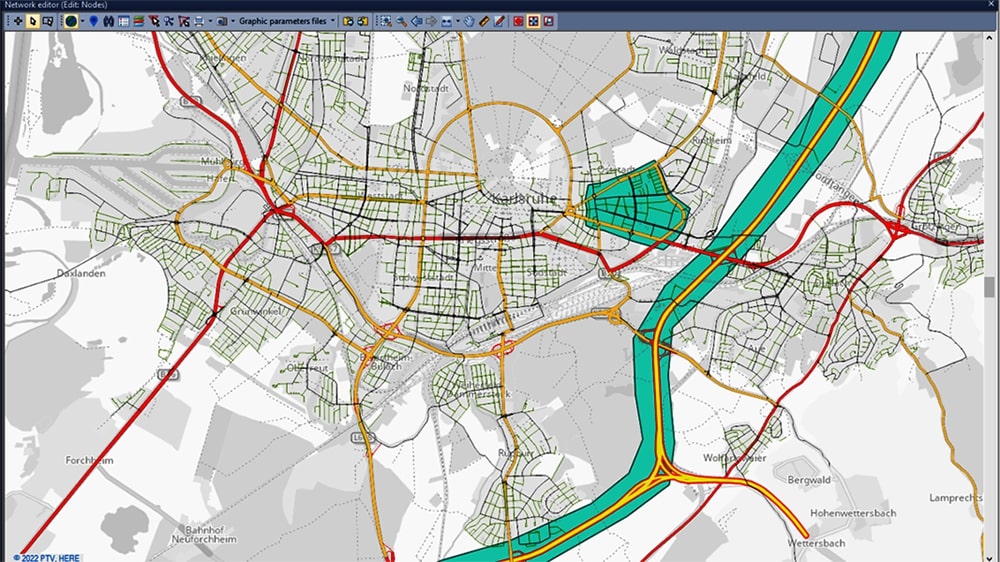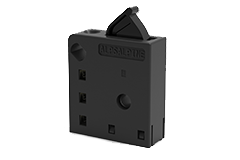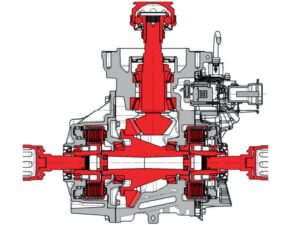
One of the strong new features of PTV Visum is the new hybrid macro-meso assignment. Users can now blend mesoscopic and macroscopic assignments in the same model run, which allows them to evaluate more projects in less time. This leverages the dynamic perspective and high level of detail provided by simulation-based assignments (SBA) for critical parts of the model. Furthermore, the mesoscopic SBA now allows lane level modeling, which unlocks new use cases, that were previously only possible in microscopic simulation.
PTV Visum 2023 brings tight integration with Activity-Sim, the popular open-source package for Activity Based demand Modeling (ABM) and provides a renewed network-wide signal optimization algorithm. For easier modeling of bicycle traffic, users can now import bicycle networks from OpenStreetMap (OSM). Besides many other improvements, Public Transit analysis gets a boost by extended and drastically accelerated import of e-Ticketing data.
In addition, the visualization tool PTV Visum Publisher was upgraded for the new release. It provides personalized cloud-based dashboards with illustrative visualizations, by which transportation modelers can share their project stories with anyone – from colleagues to decision-makers, to the public.
Many new functions in the world’s most advanced traffic simulation software, PTV Vissim, ensure automated processes and minimize errors. Also, visualizations have been improved again. Release developments include the possibility to automatically set speed limitations in curves, reverse parking and improved duplicate, copy & paste function of link connectors and selections of multiple network objects to reduce modelling effort and errors.
The new software version supports the FBX (Filmbox) format for vehicles, pedestrians, and static 3D models. In addition, PTV Vissim 2023 now offers Network / Scenario Comparison, as well as an assistant for Web Map Services (WMS) configurations.
The 2023 edition of the traffic engineering software PTV Vistro improves trip generation by adding ITE TripGen data to the model via ITE’s web-app. Moreover, the improved Universal Traffic Data Format (UTDF) import allows users to quickly integrate layout, lanes, phasing, timing plans, and volumes. Thus, users can import data from various traffic models and signal controller systems for future analysis in Vistro, Vissim, or Visum.
The new features of PTV Optima empower traffic operators to better deal with demand changes. With just a few clicks, operators can simulate a custom amount of additional traffic demand to or from specific locations and within time intervals. This makes it easy to analyze the impact of traffic events – both planned ones such as concerts, sport matches, or fairs; and unexpected events like bad weather, strikes, and evacuations.
Also simulating the impact of traffic deviations and rerouting information in case of, temporary road closure has been simplified. In addition, PTV Optima includes improved modeling and simulation of signal optimization and contingency plans. Another highlight feature is the auto-update of live traffic data maps.














